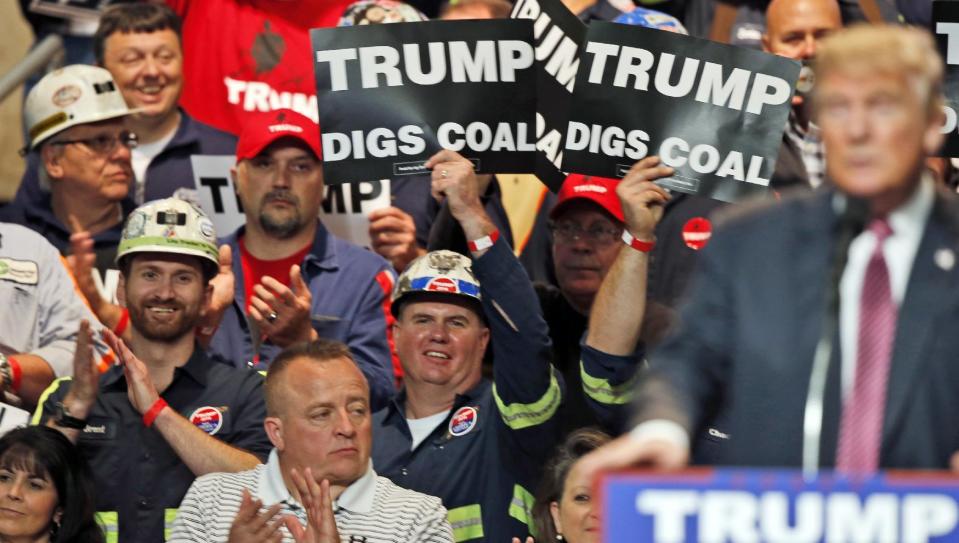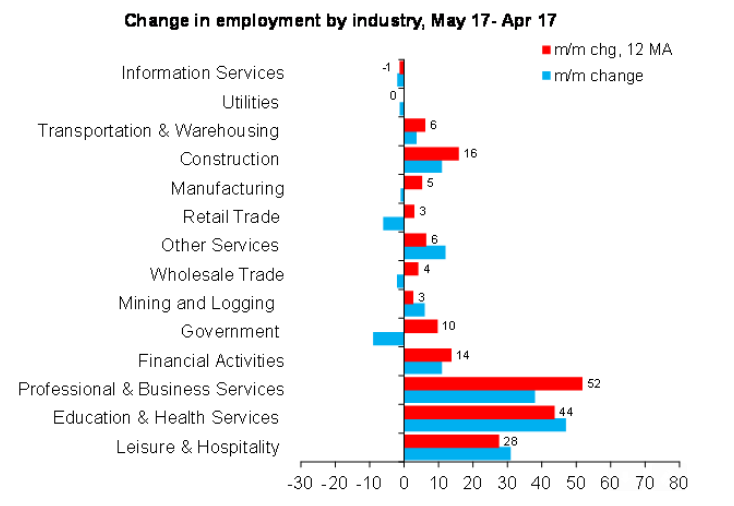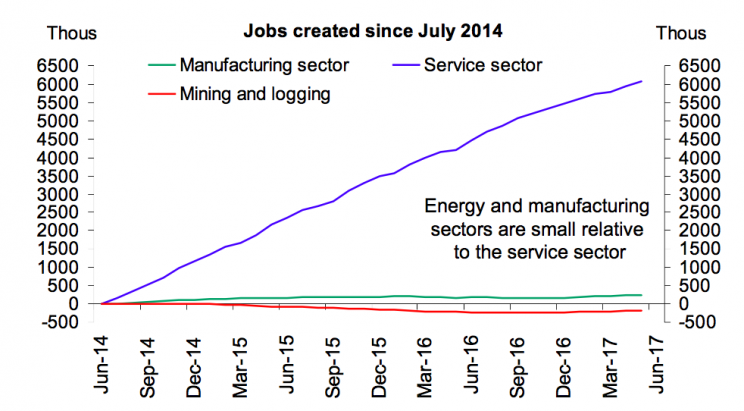Trump is trying to revitalize a dying part of the energy industry

President Donald Trump’s announcement on Thursday that the US would exit the Paris climate agreement builds on his campaign pledge to bring back the coal industry.
But despite a slight uptick of jobs in the sector in recent months, it still remains a very small share of the overall employment picture.
In fact, coal miners account for 51,000 of the 146 million payrolls in the US, as shown in the table below.

In the president’s Rose Garden address, he alluded to his commitment to coal and noted that he may attend the opening of a new coal plant in the coming weeks. A withdrawal from the Paris agreement — which targets fossil fuel consumption (impacting coal, one of the dirtier fuels) — is in keeping with commentary from Trump’s EPA chief Scott Pruitt, who has been an outspoken critic of environmental rules.
Trump has made an effort to revitalize a part of the energy industry that’s been declining for quite some time, including signing an executive order in March aimed at rolled back many climate policies of the Obama administration.
Slight uptick in coal jobs
Mining jobs did show a slight uptick in the latest jobs report, shown below.

But much of the increase was due to oil and gas extraction as well as traditional mining jobs, not necessarily coal.
And the growth in the industry still remains muted, as shown in the graph below.

Goldman Sachs’ Christian Delong estimates the number of production/non-supervisory employees in the US coal sector has increased by 1,700 since the third quarter of 2016. But he added that this has been part of restructuring in the industry and doesn’t see viable employment increases from here that are profitable for the sector.
“Now that the industry has achieved the right scale, US thermal coal producers should be able to adjust to modest changes in demand by flexing the number of weekly hours per worker within their historical range without the need to adjust employment levels,” he wrote.
Meanwhile, coal production has been trending downward since 2008 and the industry has collapsed. Peabody Energy, the world’s biggest private-sector coal producer, declared bankruptcy in April of last year. This came after Arch Coal, the second biggest producer, filed for bankruptcy in January of last year and Alpha Natural Resources filed for bankruptcy in August 2015.
A decline in demand as standards continue to shift has led to a decline in the number of total people employed in the industry over the last few decades, as shown in the chart below from the St. Louis Fed.

While Trump has pointed to Obama’s “war on coal” as the primary driver of the industry’s collapse, research has shown that this has come largely because of more energy-efficient technology, a natural gas boom, and low international demand for coal exports, particularly for metallurgical coal that goes into steel building in China.
Many in the energy industry want to stay in the Paris agreement
Ten years ago, coal made up about half of electricity generation in the US, according to the American Action Forum. This has fallen to 30%, below natural gas’ contribution. Meanwhile, renewable energy has ticked up from the low single digits to around 10%.
Goldman Sachs’ Delong predicts a continued decline in the coal industry despite policies that may support growth.
“While the regulatory environment under the Trump administration is supportive of coal, its impact on future demand is likely to be modest,” he wrote in a recent note. “In particular, the fleet of coal-fired plants currently in operation is 39 years old on average, and potential policy shifts may fail to prevent the gradual loss of market share due to continued investment in alternative energy sources.”

Meanwhile, many energy industry insiders don’t support exiting the Paris Agreement or investing too much in reinvigorating the coal industry.
ExxonMobil (XOM) CEO Darren Woods sent Trump a letter urging Trump to stay in the agreement, and Woods’s predecessor and current Secretary of State Rex Tillerson was reported to have been urging Trump to remain in the agreement.
“Energy companies don’t want this,” energy expert and author of “Shale Boom, Shale Bust,” Dan Dicker said. “If you try and revitalize a coal industry that’s going south by itself, you’re bringing in competitors to fossil fuels that you don’t need right now.”
Meanwhile, Dicker added that oil companies—which compete with coal in the energy arena—are already dealing with a supply glut.
“The energy guys are saying, ‘please don’t pull out,'” Dicker said. “They’re already dealing with a glut in oil supply.”
Nicole Sinclair is markets correspondent for Yahoo Finance.
Please also see:
Bob Iger tells us about Disney’s most ambitious project in years
Cooperman: There are 4 things to worry about when you look at the stock market
Warren: Senators are spending 110% of their time working through what Trump has done
Senator Warren: The CFPB reminds us that government can actually work
